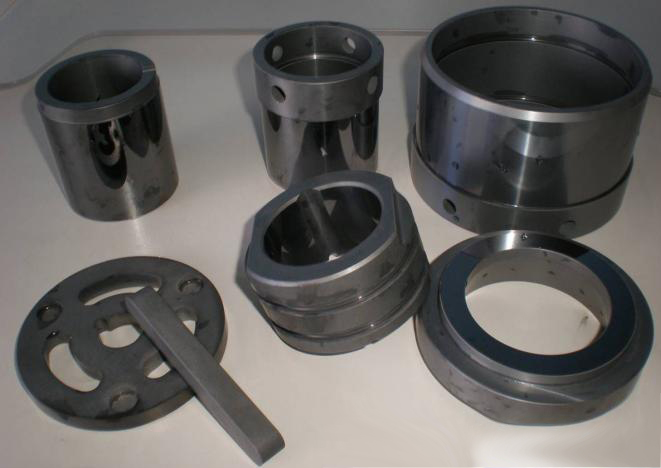



The silicon carbide has advanced property of wear-resistance, anti-corrosive, high heat conductivity & low dilatability and good intensity. They are widely applied as piston ring, bushing, bearing and vane in kettle, pump and compressor. They are also widely applied in mould.
Silicon carbide is formed in two ways, reaction bonding and sintering. Each forming method greatly affects the end microstructure.Reaction bonded SiC is made by infiltrating compacts made of mixtures of SiC and carbon with liquid silicon. The silicon reacts with the carbon forming more SiC which bonds the initial SiC particles.Sintered SiC is produced from pure SiC powder with non-oxide sintering aids. Conventional ceramic forming processes are used and the material is sintered in an inert atmosphere at temperatures up to 2000oC or higher.
Typical silicon carbide applications include:
*Fixed and moving turbine components
*Seals, bearings, pump vanes
*Ball valve parts
*Wear plates
*Kiln furniture
*Heat exchangers
*Semiconductor wafer processing equipment
Grade: Reaction Bonded Silicon Carbide (RSiC)
| Parameter | Value |
| Density | 3.00–3.05g/cm3 |
| Hardness | 110 – 120 HS |
| Modulus of Elasticity | 394 Gpa |
| Tensile Strength | 28 Mpa |
| Bending Strength | 338 Mpa |
| Compression Strength | 1120 Mpa |
| Thermal Coeffcient of Expansion | 4.3 X 10-6 1/ |
| Heat-resisting Temperature (in atmosphere) | |
| Thermal Shock Coefficient | |
| Free-Silicon value | ≤10 % |
Grade: Alpha Sintered Silicon Carbide (ASiC)
| Parameter | Value |
| Purity | >97 |
| Porosity | <0.2% |
| Density | 3.1 g /cm3 |
| Hardness | 115 HS |
| Modulus of Elasticity | 450 Gpa |
| Bending Strength | 400 Mpa |
| Free-Silicon | ≤0.2% |
| Free-Carbon | ≤0.2% |